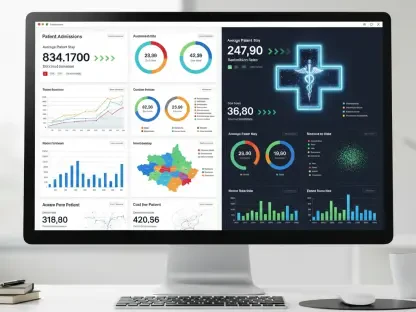I’m thrilled to sit down with Faisal Zain, a renowned expert in healthcare technology with a deep background in medical device manufacturing for diagnostics and treatment. With years of experience driving innovation in the field, Faisal brings a unique perspective on how technology can transform healthcare operations. Today, we’re diving into the challenges of provider data management, the impact of inaccurate information on the industry, and the role of cutting-edge solutions in streamlining processes and improving patient experiences. Our conversation explores the intersection of technology and healthcare, focusing on how unified data platforms can reduce administrative burdens and enhance decision-making.
How did you first recognize the critical need for better provider data management in the healthcare industry?
Early in my career, I saw firsthand how fragmented data systems created chaos in healthcare operations. Working on diagnostic tools, I noticed that even the best technology couldn’t overcome outdated or incorrect provider information. This led to delays in care, billing errors, and frustrated patients. It became clear that the industry needed a way to centralize and clean up provider data to ensure smooth operations across the board, from claims processing to patient access.
What are some of the biggest challenges healthcare organizations face when it comes to maintaining accurate provider information?
The biggest hurdle is the sheer volume of disjointed data sources—credentialing records, directories, claims, and more. Each department often maintains its own records, leading to inconsistencies. On top of that, manual updates are incredibly time-consuming and prone to errors. This creates a ripple effect, impacting everything from payment integrity to patient trust when they can’t find an in-network provider due to outdated listings.
Can you walk us through how a unified data platform can transform the way health plans and digital health companies operate?
Absolutely. A unified platform pulls data from multiple sources and standardizes it into a single, reliable file. This eliminates silos within organizations, so every team—from contracting to claims—works off the same accurate information. It reduces manual labor, cuts down on errors, and speeds up processes like provider credentialing or directory updates, ultimately saving time and significant costs.
Why do you think inaccurate provider data has such a profound impact on patient experience and healthcare operations?
Inaccurate data directly affects trust and efficiency. Imagine a patient showing up to a doctor’s office only to find out their insurance isn’t accepted because the directory was outdated. Or a claim being denied due to incorrect provider details. These issues frustrate patients and create extra work for providers and payers. On the operational side, bad data leads to payment delays and compliance risks, which can be devastating for smaller organizations.
How does technology, like artificial intelligence, play a role in addressing these data challenges?
AI is a game-changer here. It can analyze massive datasets quickly, identify inconsistencies, and even predict potential gaps before they become problems. For instance, AI can flag outdated records or detect patterns in claims data that suggest a provider’s information needs updating. This kind of proactive approach minimizes errors and keeps data current without relying on slow, manual processes.
What are the financial implications of poor provider data management, and how can innovative solutions help reduce those costs?
The financial burden is staggering—billions are spent annually on manually updating provider directories alone. These costs come from labor, inefficiencies, and errors that lead to denied claims or regulatory fines. Innovative solutions that automate data integration and monitoring can slash these expenses by reducing the need for manual intervention and ensuring accuracy, which prevents costly mistakes downstream.
How can a centralized data hub improve collaboration across different teams within a healthcare organization?
A centralized hub acts as a single source of truth. When one team updates provider information, that change is instantly reflected across the entire organization. This prevents scenarios where, say, the contracting team has current data, but the claims team is working off outdated records. It fosters seamless communication and ensures everyone is aligned, which is critical for operational efficiency.
What features do you think are essential in a data platform to support better decision-making for healthcare payers?
Key features include real-time monitoring and alerts for outdated or incomplete data. A good platform should also have analytics capabilities to spot trends or gaps in provider networks. For example, if certain specialties are underrepresented in a region, the system should highlight that. These insights empower payers to make informed decisions about network expansion or resource allocation.
Can you share a real-world example of how outdated provider data has caused significant issues for a healthcare organization or patient?
I recall a case where a patient relied on an insurance directory to find an in-network specialist, only to arrive and learn the provider had moved six months earlier. The patient faced unexpected out-of-pocket costs, and the insurance company had to deal with a disputed claim. This kind of situation damages trust and creates unnecessary administrative headaches, all because the data wasn’t updated in a timely manner.
What is your forecast for the future of provider data management in healthcare?
I’m optimistic that we’re moving toward a future where provider data management is fully automated and integrated. With advancements in AI and interoperability standards, I foresee platforms becoming even more intuitive, predicting issues before they arise and connecting directly with providers for real-time updates. This will drastically reduce administrative costs and improve patient outcomes by ensuring access to accurate, reliable information at every touchpoint.









